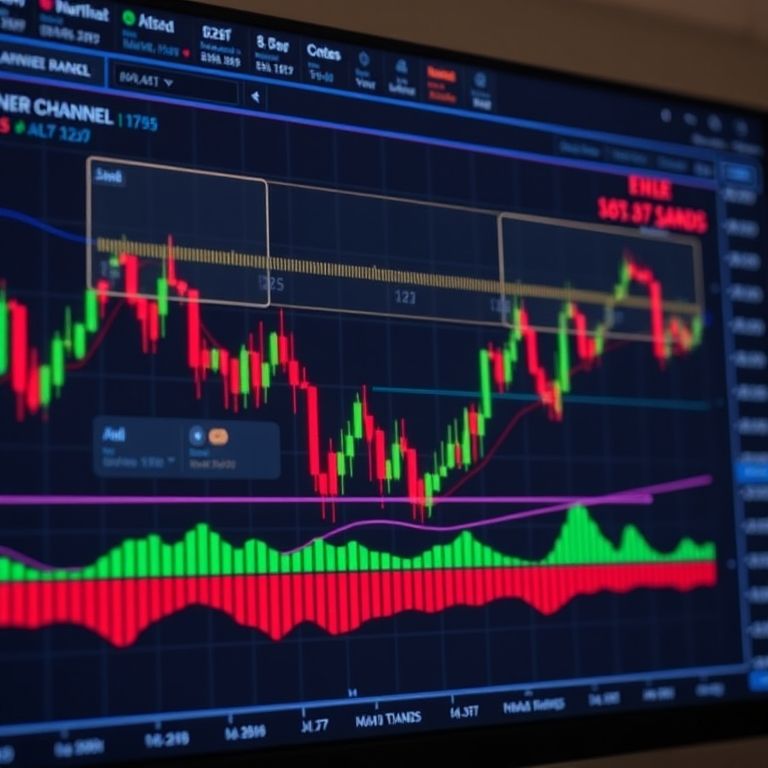Best Keltner Channel settings for day trading
Best Keltner Channel Settings for Day Trading
Introduction
You’re staring at a fast, choppy tape and know you need a reliable envelope, not a crystal ball. The Keltner Channel sits around price like a flexible weatherband—tracking volatility with an EMA center line and ATR-based width. Nail the right settings for day trading, and you gain cleaner breakout signals, tighter stop levels, and fewer false alarms across assets from forex to crypto. This guide breaks down practical settings, tweaks for different markets, and how to weave in risk controls and emerging tech trends to stay ahead.

Understanding the Keltner Channel for day traders
The core idea is simple: the center is an moving average that follows price, while the bands expand and contract with true volatility. That expansion tells you when price is carving out room to move, and contractions hint at a pause or consolidation. For day traders, responsiveness matters more than long-horizon fit. Tuning the period and the multiplier determines how sensitive the channel is to the latest price action versus filtering out noise.
Core settings that keep pace with the market
- Center line: use an exponential moving average (EMA) rather than a simple average. An EMA around 20 works well for many intraday charts, but you’ll want to nudge it based on liquidity and how quickly price moves in a given instrument.
- Channel width: base width on the ATR rather than a fixed percentage. Typical ranges you’ll see in practice are:
- ATR multiplier around 1.4–2.0 for forex, with the lower end favored in tight, liquid pairs.
- 2.0–2.5 for stocks and indices, where price swings can be bigger within a day.
- Crypto and high-volatility assets often respond well to 2.0–3.0, especially on 5- to 15-minute charts.
- ATR period: a shorter ATR period (10–14) keeps bands responsive; longer periods (14–20) smooth the width a bit for less choppiness. If you’re trading on 1–5 minute timeframes, lean toward 10–12.
- Timeframe alignment: intraday charts (1m, 5m, 15m) benefit from slightly tighter settings; if you’re watching a broader window (30m, 1h), widen the bands and the EMA period a touch.
Asset-specific tweaks
- Forex: liquidity is high, but ATR can be modest in majors. Start with EMA 20, ATR multiplier 1.6–1.8, ATR 12–14. This keeps the bands close enough to catch pullbacks without overreacting to random noise.
- Stocks: higher intraday swings demand a bit more width. Try EMA 20, ATR 2.0, ATR 12–14. For volatile memes or earnings days, consider 2.2–2.5.
- Crypto: volatility is the wild card. EMA 15–20 with ATR 2.0–3.0 on 5–15 minute charts often fits, but be ready to tighten or loosen during a news spike.
- Indices and commodities: moderate-to-high liquidity. EMA 20, ATR 1.8–2.2, ATR 12–14 tends to balance momentum with noise control.
- Options-aware trading: when implied volatility is high, bands can widen; back off width to avoid whipsaw by focusing signals around established trend direction rather than standalone breakouts.
Practical signals and reliability
- Breakouts above the upper band or below the lower band can signal momentum shifts, but confirm with a trend filter (price above EMA for longs, below for shorts) and a secondary indicator such as RSI or MACD to avoid chasing overbought/oversold candles.
- Mean reversion plays work when price whips near the center line; expect successful reentries after a test of the middle band rather than chasing a breakout every time.
- Manage risk with tight stop placement just outside the opposite band or a fixed ATR-based distance from entry, and scale position size to your daily risk limit.
DeFi, decentralization, and forward-looking challenges
Decentralized finance offers price feeds and alternative liquidity venues, but it also introduces oracle risk, slippage, and fragmented data quality. Keltner-style envelopes applied to on-chain price charts can still guide intraday decisions, but you’ll want robust data validation and cross-checks across multiple feeds to avoid whipsaw from feed inconsistencies.
Future trends: smart contracts, AI-driven trading
Smart contracts can automate adaptive setting changes—pulling from volatility metrics and risk thresholds in real time—while AI can optimize your EMA and ATR parameters across instruments and sessions. The result could be dynamic channel widths that tighten in quiet hours and widen during high-impact events, with built-in safeguards.
Prop trading and the path forward
Prop desks prize consistent, repeatable signals and disciplined risk management. The right Keltner settings act as a backbone for robust intraday systems, helping traders sift quality moves from noise across forex, stock, crypto, indices, options, and commodities. A core message: tune, test, and respect the risk front.
Promotional slogan ideas
- Best Keltner Channel settings for day trading: tune, trade, triumph.
- Precise envelopes, sharper entries—unlock day-trade clarity with the right Keltner setup.
- From turbulence to target: optimize every move with adaptive Keltner channels.
If you’re looking for a concrete starting point: try EMA 20 with ATR multiplier 1.6–2.0 (ATR 12–14) on a 5–15 minute chart for forex and stocks, then tailor by asset and session. The payoff is cleaner signals, steadier exits, and a workflow you can trust in a fast market.
YOU MAY ALSO LIKE




